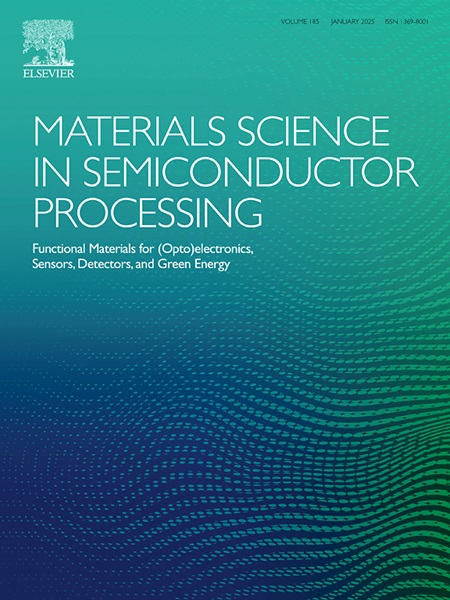Synthesis, characterization, and photocatalytic degradation of methylene blue dye using Bi2S3/WS2/gC3N4-based heterojunction nanocomposite
IF 4.2
3区 工程技术
Q2 ENGINEERING, ELECTRICAL & ELECTRONIC
引用次数: 0
Abstract
This study synthesized gC3N4-supported Bi2S3/WS2 heterojunction nanocomposite using a simple hydrothermal method for degrading the methylene blue (MB) dye under natural sunlight. The as-synthesized ternary Bi2S3/WS2/gC3N4 nanocomposite was characterized using structural, morphological, and spectroscopic techniques, revealing the successful synthesis of WS2-decorated Bi2S3 nanorods supported by gC3N4 carbon matrix. The surface chemistry and porosity analysis display the mesoporous nature, which results in increased photocatalytic active sites for MB dye under sunlight for the ternary Bi2S3/WS2/gC3N4 nanocomposite. The photocatalytic activity of pristine Bi2S3 was increased from 32 % to 82 % for 180 min by natural light exposure, with the induction of WS2 nanostructure and gC3N4 carbon support to Bi2S3 nanorods. The scavenger test results show the formation of free radical factors such as , O2−, and •OH, which are crucial factors for improving the degradation process. The Bi2S3/WS2/gC3N4 nanocomposite photocatalyst stability remains at 45.6 % even after three repetitive cycles of MB dye degradation.
Bi2S3/WS2/ gc3n4基异质结纳米复合材料的合成、表征及光催化降解亚甲基蓝染料
本研究采用简单的水热法在自然光照下合成了gc3n4负载Bi2S3/WS2异质结纳米复合材料,用于降解亚甲基蓝(MB)染料。利用结构、形态和光谱等技术对合成的Bi2S3/WS2/gC3N4三元复合材料进行了表征,成功合成了以gC3N4碳基体为载体的WS2修饰Bi2S3纳米棒。表面化学分析和孔隙度分析表明,纳米复合材料具有介孔性质,这使得纳米复合材料在阳光下的光催化活性位点增加。在自然光照射180 min后,WS2纳米结构和gC3N4碳载体诱导Bi2S3纳米棒的光催化活性从32%提高到82%。清除剂试验结果表明,h+、O2−和•OH等自由基因子的形成是改善降解过程的关键因素。Bi2S3/WS2/gC3N4纳米复合光催化剂经过3次循环降解后,稳定性仍保持在45.6%。
本文章由计算机程序翻译,如有差异,请以英文原文为准。
求助全文
约1分钟内获得全文
求助全文
来源期刊

Materials Science in Semiconductor Processing
工程技术-材料科学:综合
CiteScore
8.00
自引率
4.90%
发文量
780
审稿时长
42 days
期刊介绍:
Materials Science in Semiconductor Processing provides a unique forum for the discussion of novel processing, applications and theoretical studies of functional materials and devices for (opto)electronics, sensors, detectors, biotechnology and green energy.
Each issue will aim to provide a snapshot of current insights, new achievements, breakthroughs and future trends in such diverse fields as microelectronics, energy conversion and storage, communications, biotechnology, (photo)catalysis, nano- and thin-film technology, hybrid and composite materials, chemical processing, vapor-phase deposition, device fabrication, and modelling, which are the backbone of advanced semiconductor processing and applications.
Coverage will include: advanced lithography for submicron devices; etching and related topics; ion implantation; damage evolution and related issues; plasma and thermal CVD; rapid thermal processing; advanced metallization and interconnect schemes; thin dielectric layers, oxidation; sol-gel processing; chemical bath and (electro)chemical deposition; compound semiconductor processing; new non-oxide materials and their applications; (macro)molecular and hybrid materials; molecular dynamics, ab-initio methods, Monte Carlo, etc.; new materials and processes for discrete and integrated circuits; magnetic materials and spintronics; heterostructures and quantum devices; engineering of the electrical and optical properties of semiconductors; crystal growth mechanisms; reliability, defect density, intrinsic impurities and defects.
 求助内容:
求助内容: 应助结果提醒方式:
应助结果提醒方式:


